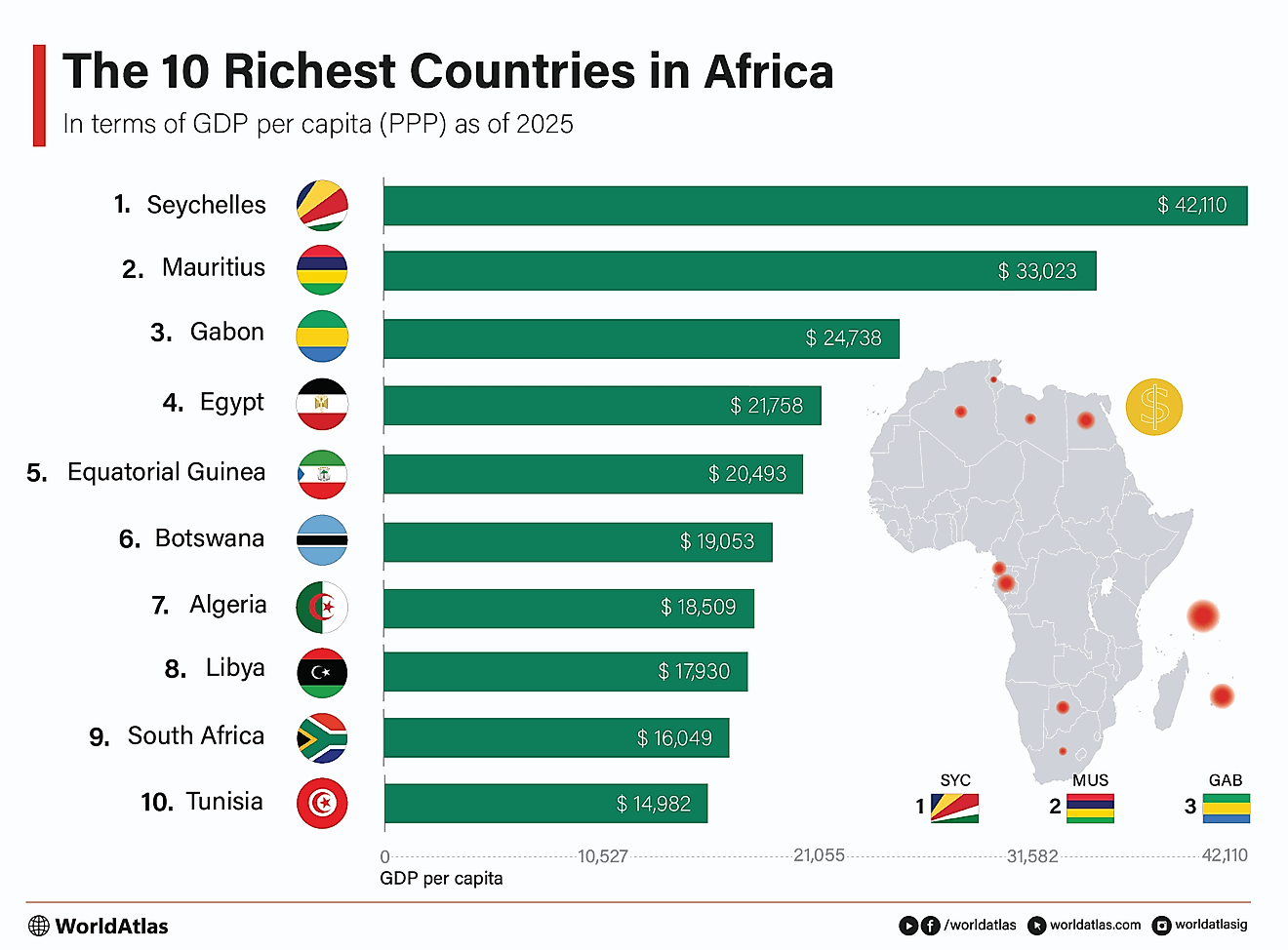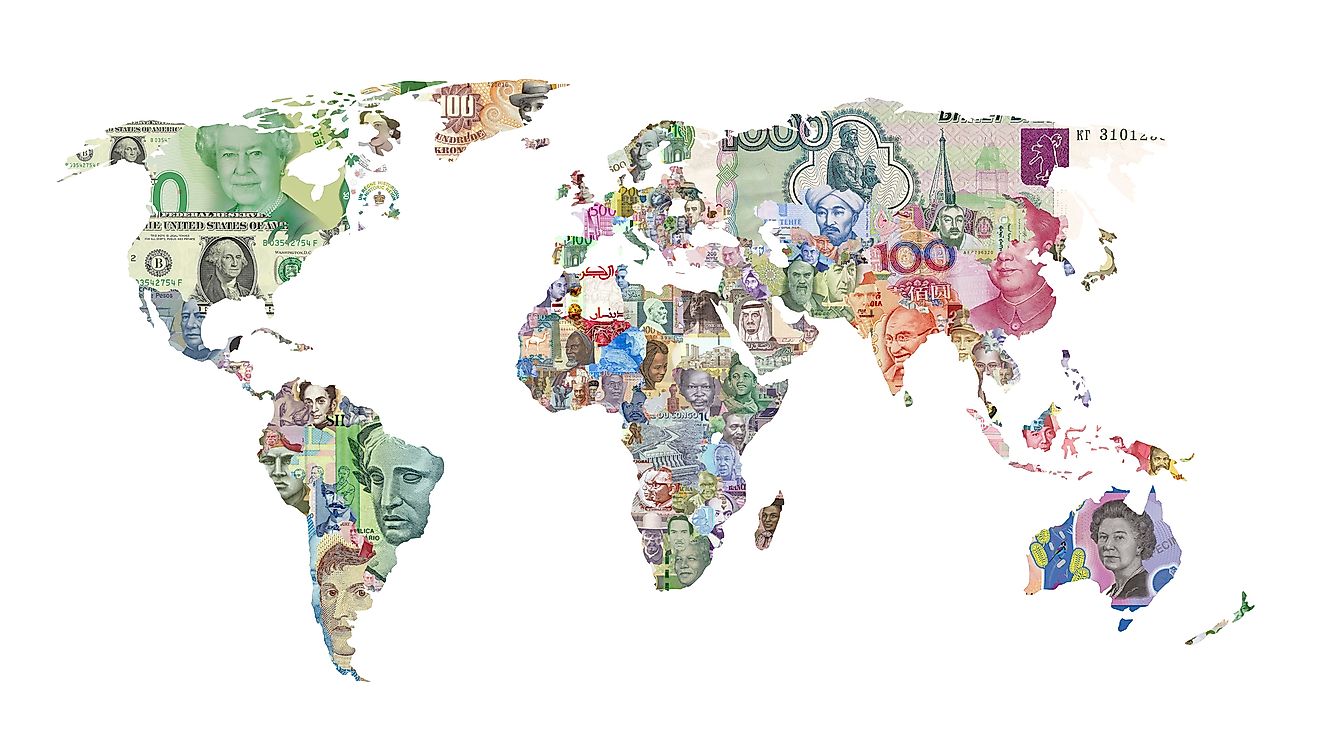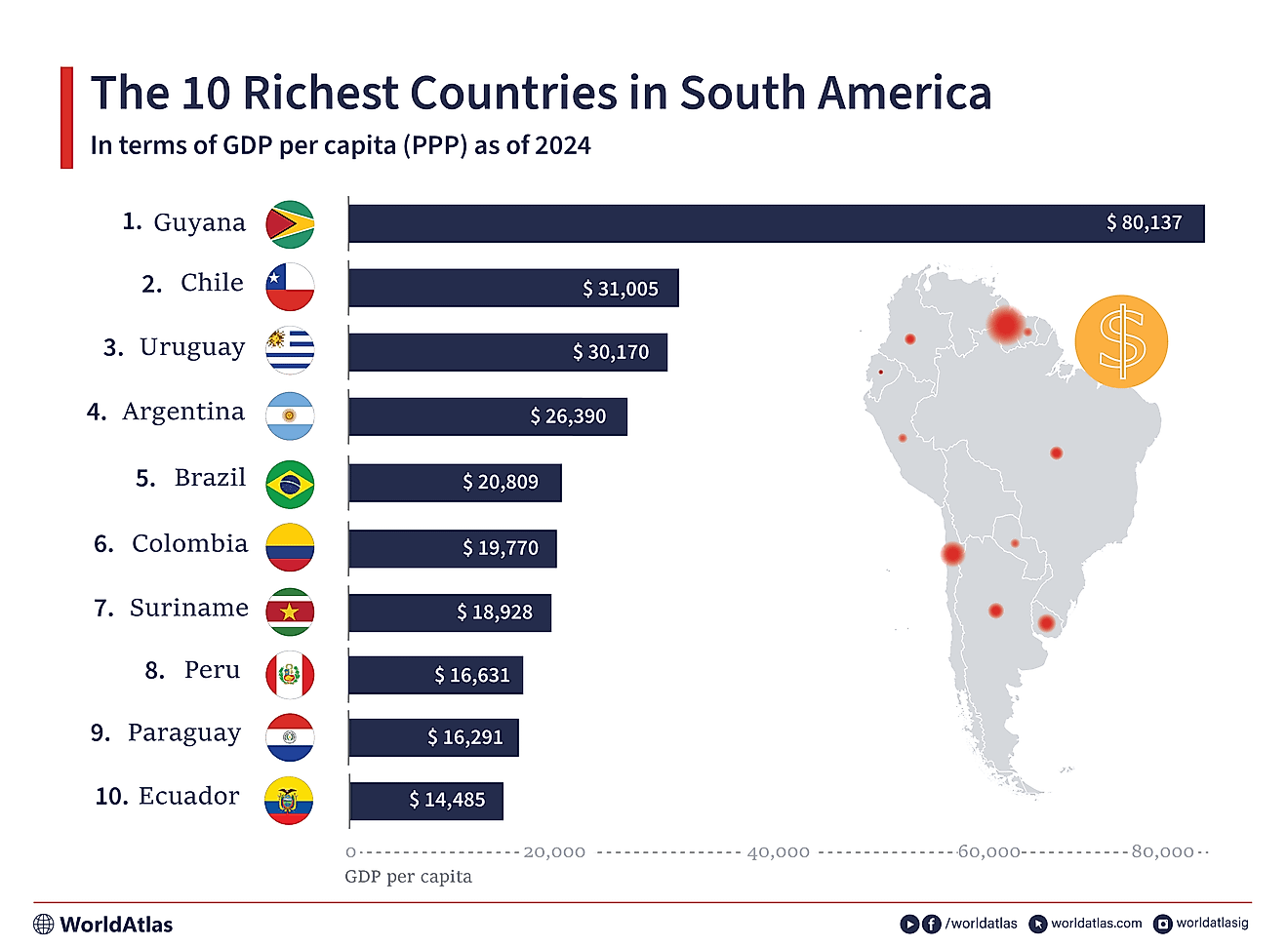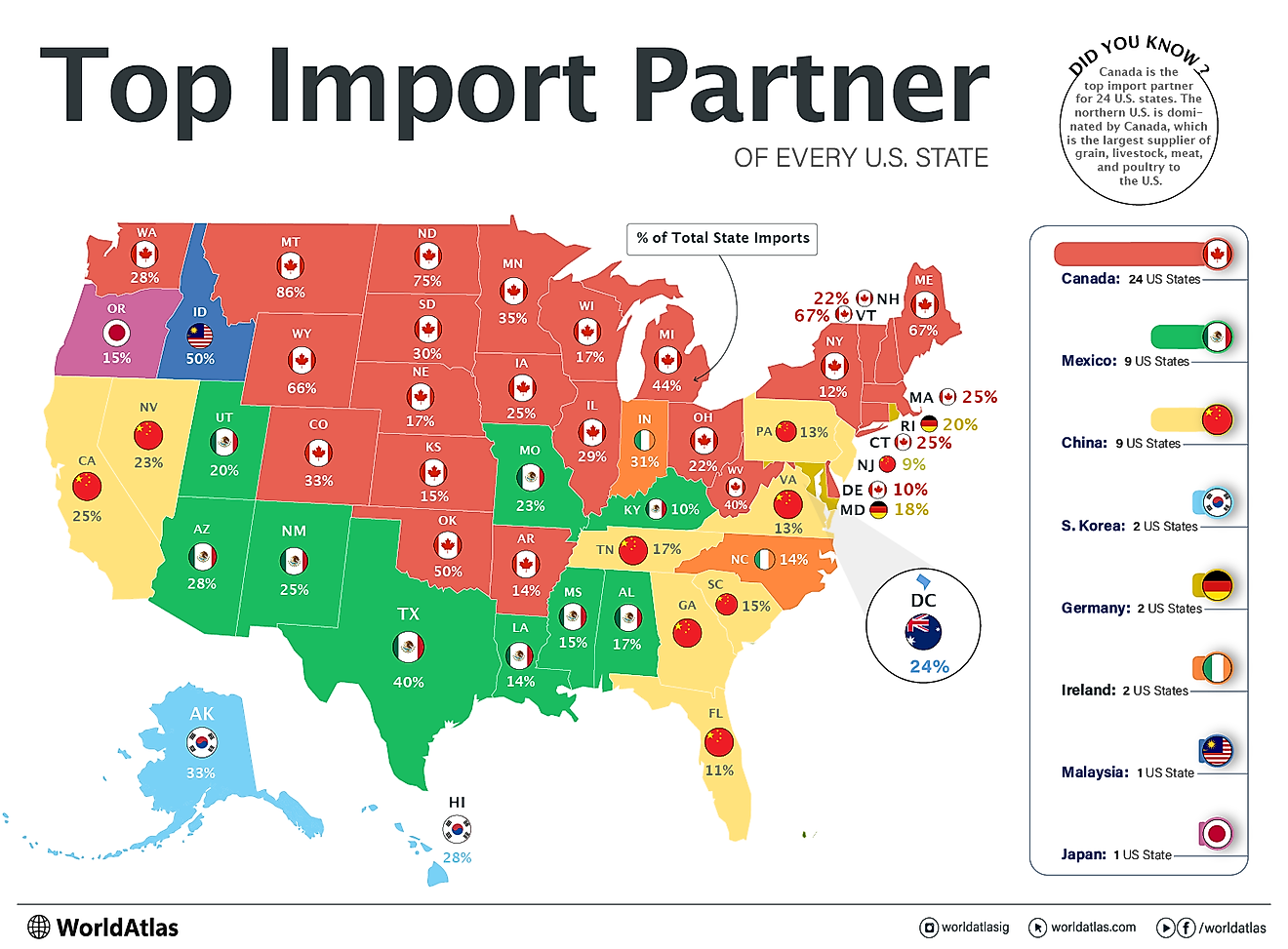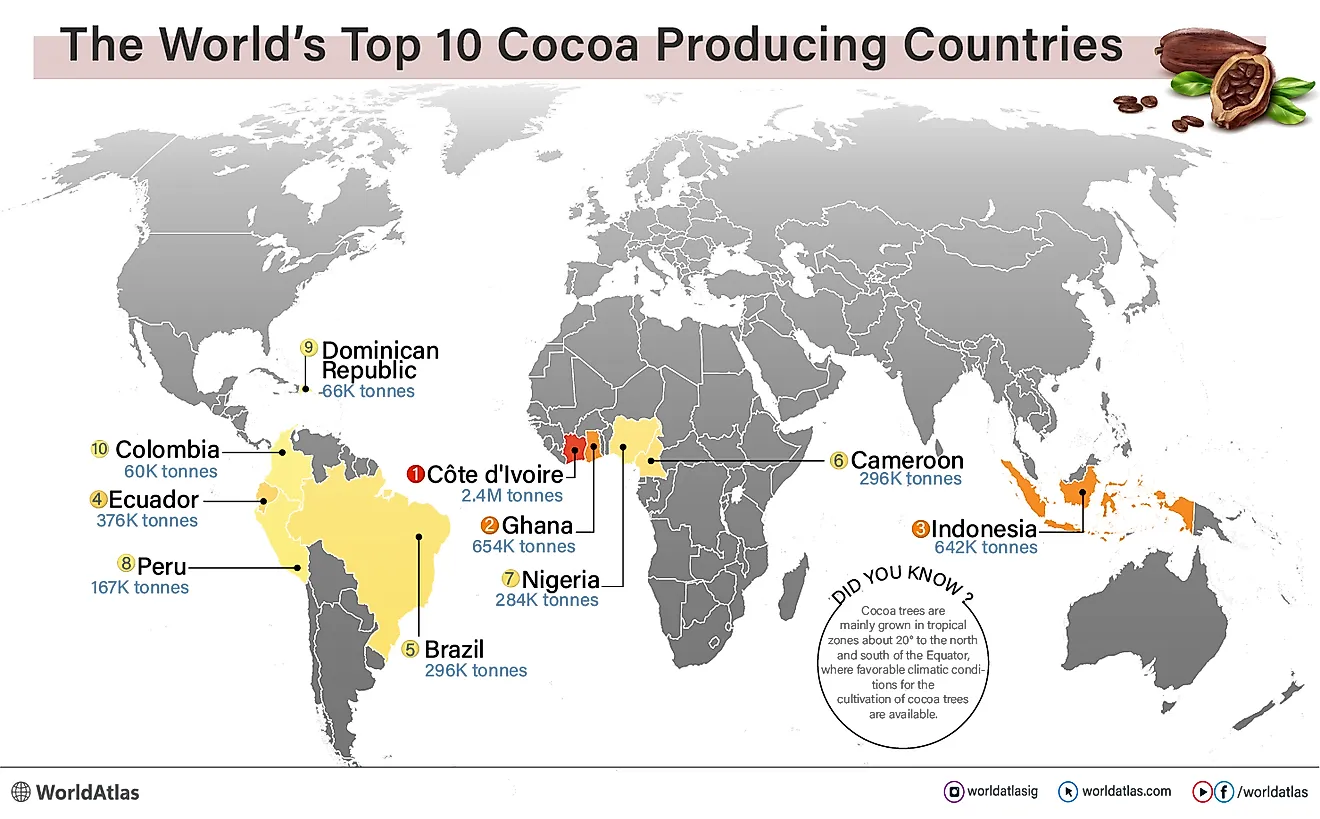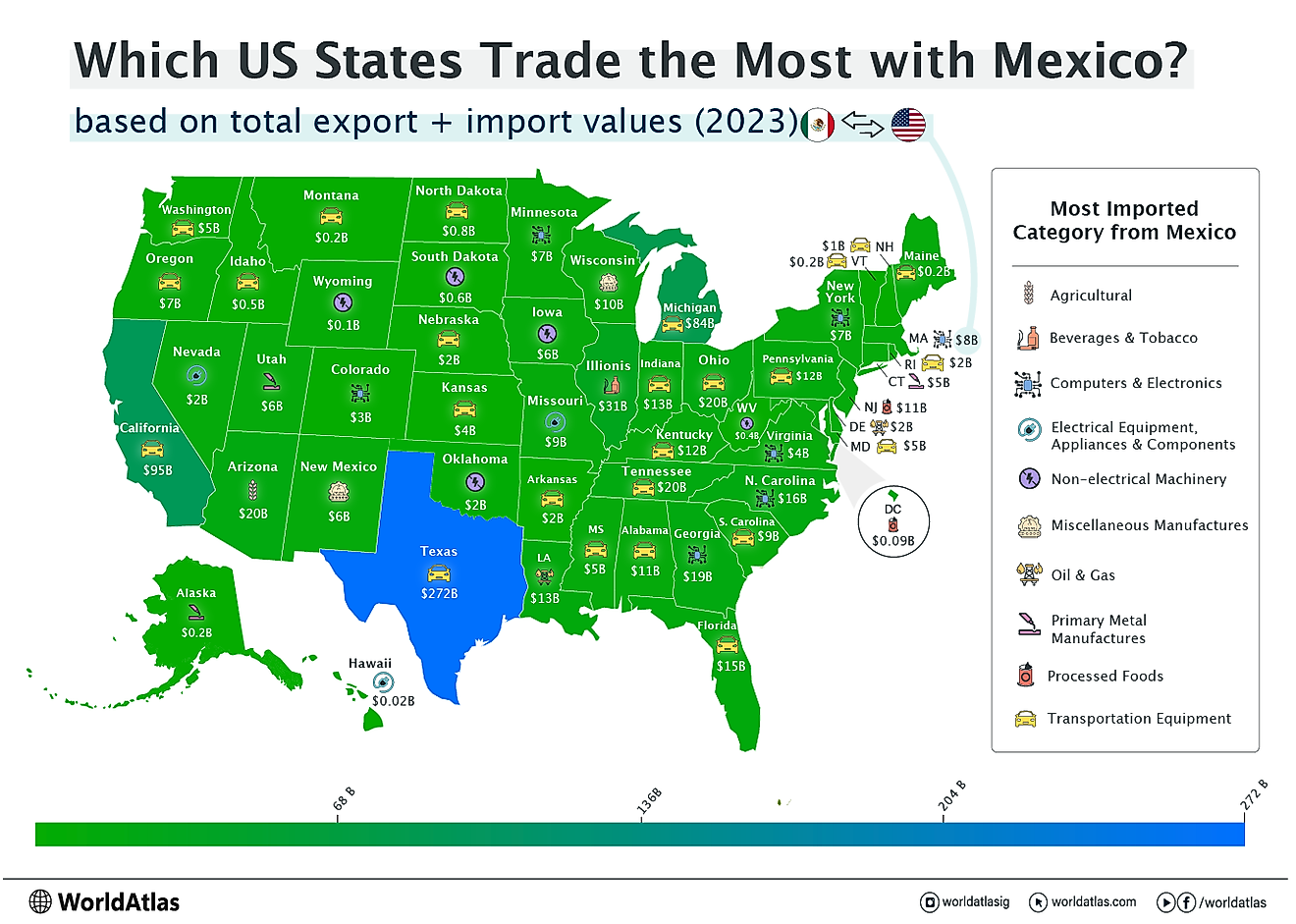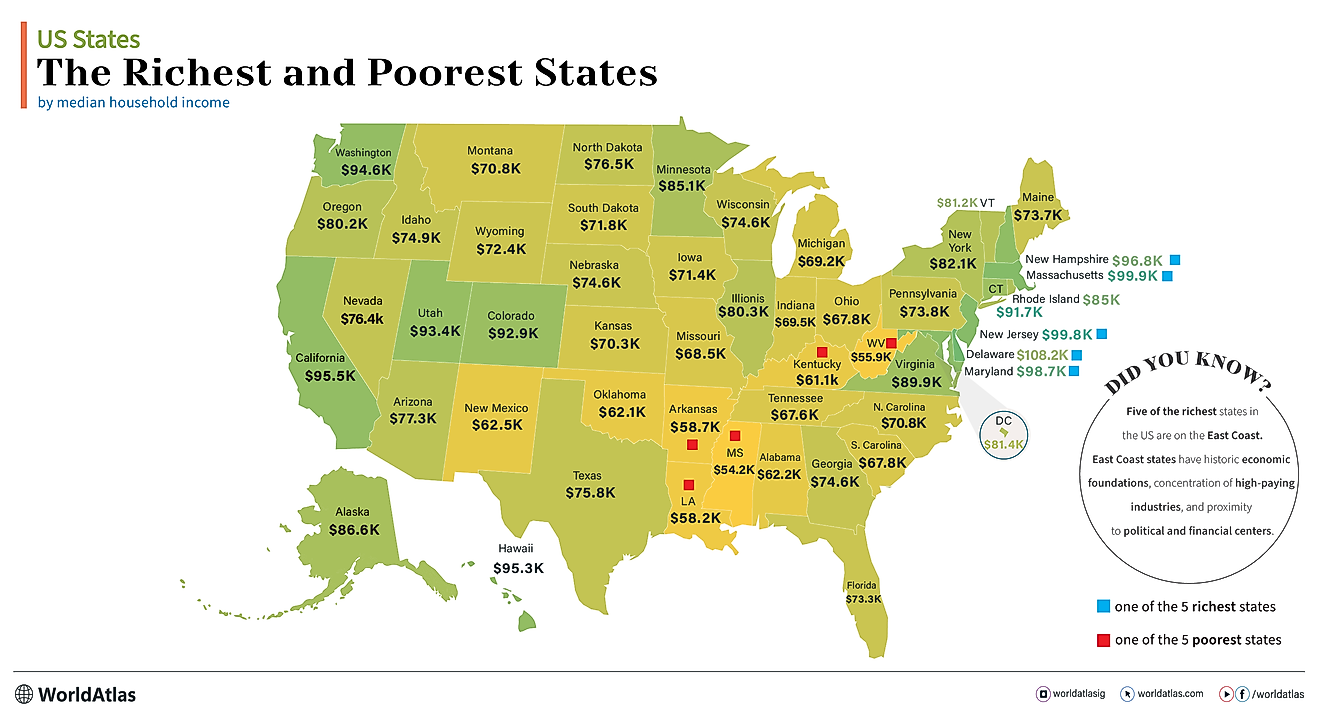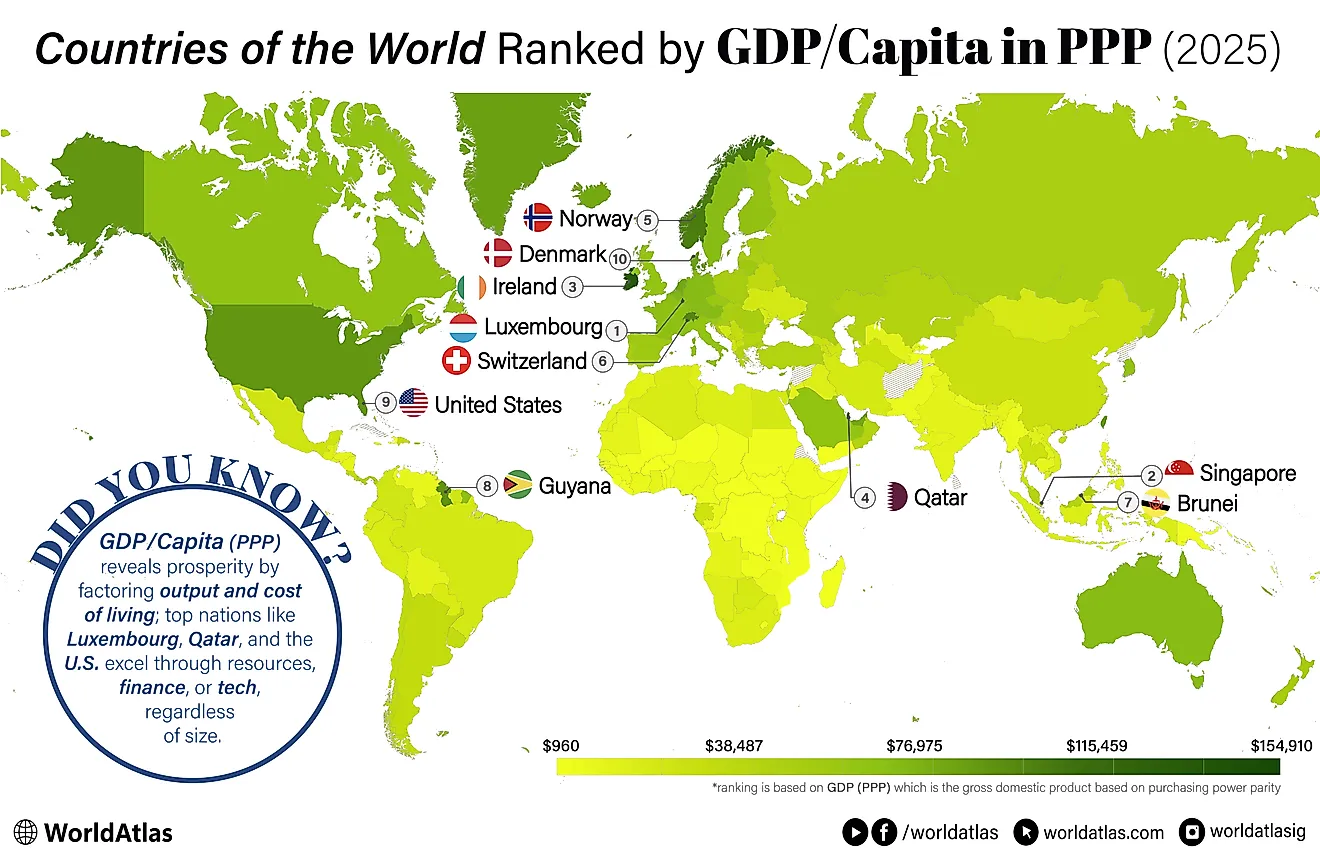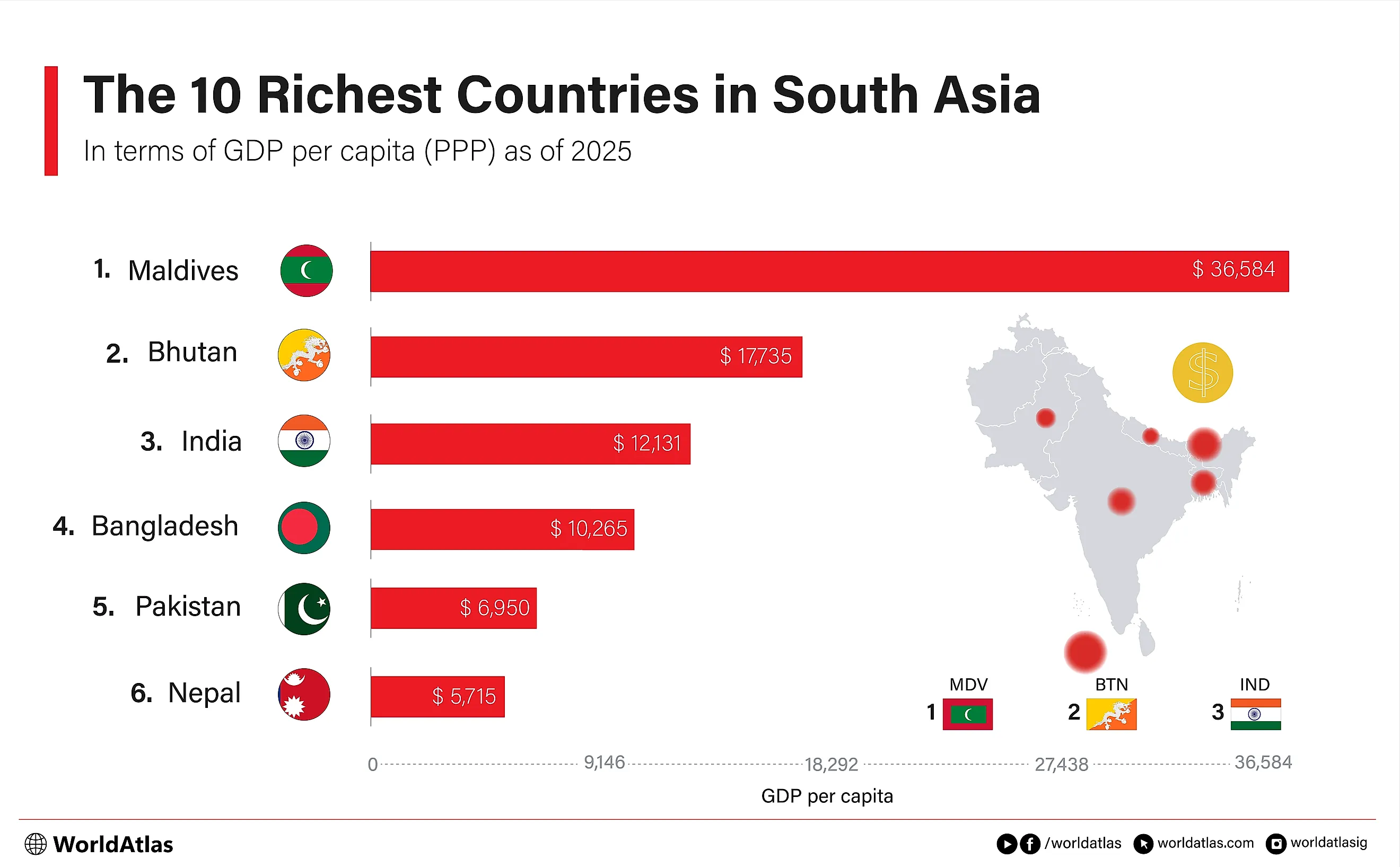
The Richest Countries In South Asia 2025
Home to eight sovereign nations and nearly two billion people, South Asia is best known for its dense cities, monsoon-fed farmlands, and youthful labour force. Yet within this single region, GDP/capita PPP levels vary more than sixfold. The tourism-driven Maldives tops the 2025 list at $36,065 (PPP), followed by hydropower-rich Bhutan at $17,721 and the IT-service giant India at $12,100. Bangladesh, Pakistan, and Nepal round out the published rankings, while recent IMF tables list no 2025 estimate for Sri Lanka or Afghanistan.
The figures reflect divergent economic engines: resort tourism, remittances, textiles, digital services, and exposure to cyclones, glacial melt, and political instability. The profiles that follow examine how each country’s policies, demographics, and climate risks shape its path to prosperity in the world’s fastest-growing large region.
South Asian Countries Ranked By GDP/Capita (PPP)
| Rank | Country | GDP/Capita (PPP) |
|---|---|---|
| - | Afghanistan | no data |
| - | Sri Lanka | no data |
| 1 | Maldives | $36,065 |
| 2 | Bhutan | $17,721 |
| 3 | India | $12,100 |
| 4 | Bangladesh | $10,257 |
| 5 | Pakistan | $6,949 |
| 6 | Nepal | $6,139 |
1. Maldives - $36,066 GDP/Capita (PPP)
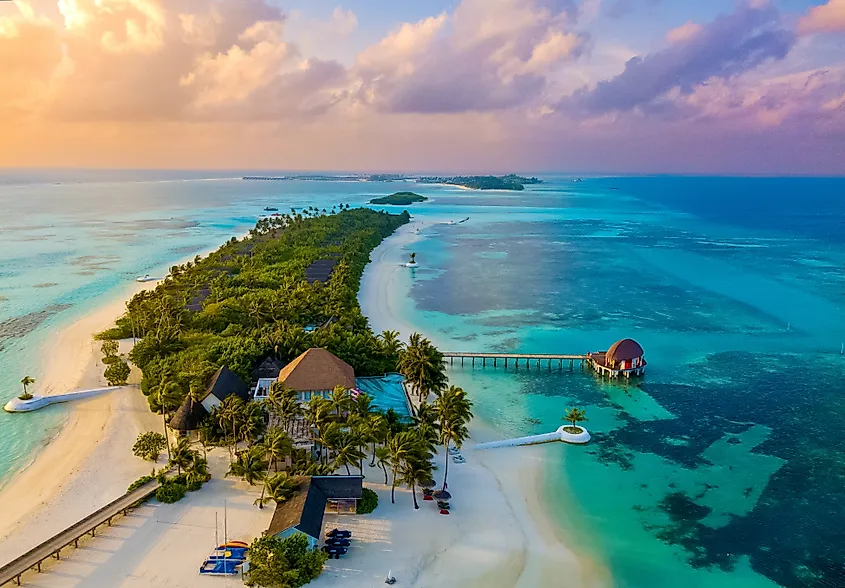
With a 2025 GDP/capita (PPP) of around $ 36,000 (PPP), the Maldives tops South Asia’s wealth rankings. The upper-middle-income archipelago earns 73 % of its output from services, led by deluxe resort tourism, which supplies over 60 % of foreign exchange and most fiscal revenue. Fishing and fish-processing remain vital second pillars, while light boatbuilding, garments, and handicrafts round out the industry. Rapid growth averaged 7-10 % for decades, rebounding strongly after the 2020 pandemic shock. Yet heavy import dependence, external debt, much owed to China, and extreme climate vulnerability pose risks. Income inequality persists between the capital, Malé, and remote atolls despite gains in health, education, poverty reduction, and digitalisation efforts.
2. Bhutan - $17,722 GDP/Capita (PPP)
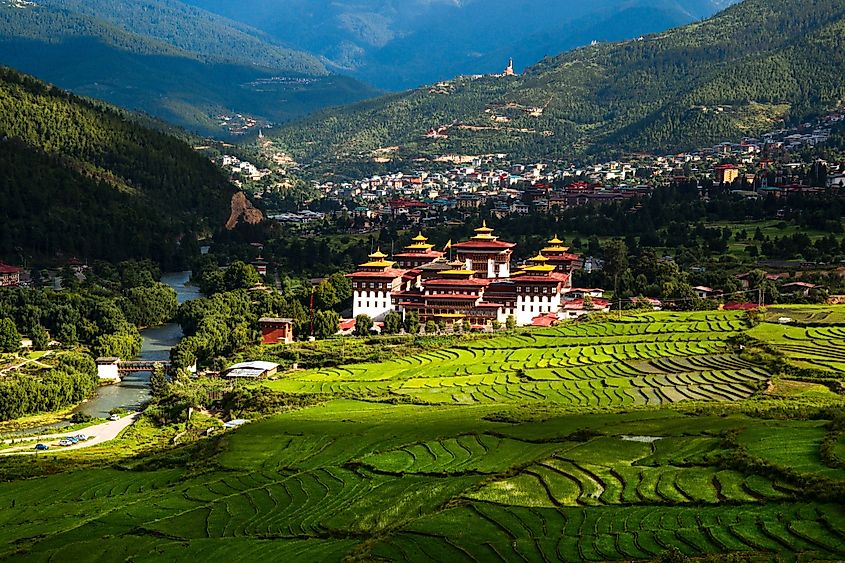
Bhutan ranks as South Asia’s second richest country, with a GDP/Capita (PPP) of $17,722. Its economy is rooted in hydropower exports to India, cottage industries, and tourism, carefully managed to preserve cultural and environmental values. Agriculture still employs most of the population, though services and industry contribute nearly 84% of GDP.
Bhutan made headlines by mining Bitcoin with surplus hydropower, using profits to raise civil servant wages. The country recently graduated from the UN’s Least Developed Countries list and continues to balance modernization with its philosophy of Gross National Happiness and sustainable development.
3. India - $12,101 GDP/Capita (PPP)
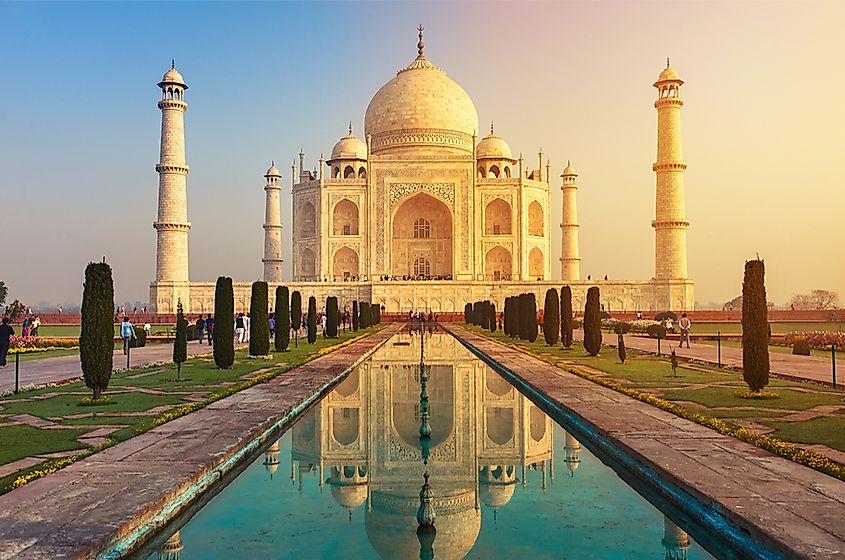
India, South Asia’s largest economy, is a global powerhouse ranked 4th in nominal GDP and 3rd by purchasing power parity in South Asia in 2025. With a population exceeding 1.4 billion, its mixed economy is driven by domestic consumption, services, and exports. The services sector contributes over 50% of GDP, while agriculture remains the largest employer. Since liberalization in 1991, India has witnessed rapid growth in manufacturing, technology, and finance. Major industries include IT, pharmaceuticals, automobiles, and textiles. Despite strong economic gains, challenges persist, including unemployment, income inequality, infrastructure gaps, and agricultural inefficiencies. India also leads globally in remittances, FDI inflows, and data services.
4. Bangladesh - $10,258 GDP/Capita (PPP)
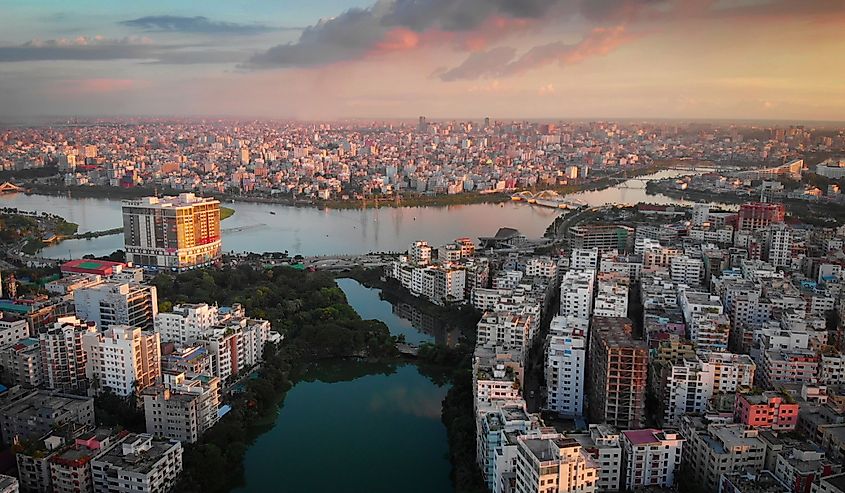
Bangladesh, South Asia’s second-largest economy by nominal GDP, has transformed from one of the world’s poorest nations into a rapidly developing economy. With a 2025 GDP of $467 billion (nominal), it is a major player in textiles, agriculture, and pharmaceuticals. The country’s export-led growth, especially in ready-made garments, has driven industrialization, job creation, and rising foreign exchange reserves. Agriculture employs over 40% of the workforce and supports food self-sufficiency. The private sector dominates, contributing 80% of GDP, with small and medium enterprises playing a central role.
Despite progress, Bangladesh faces challenges including inflation, high debt, and a banking sector burdened with non-performing loans. Remittances and a growing digital economy provide economic stability. Infrastructure megaprojects like the Padma Bridge are boosting growth. However, recent political unrest and global shocks have strained reserves and disrupted trade, highlighting the need for structural reforms to sustain momentum and prevent economic setbacks.
5. Pakistan - $6,950 GDP/Capita (PPP)
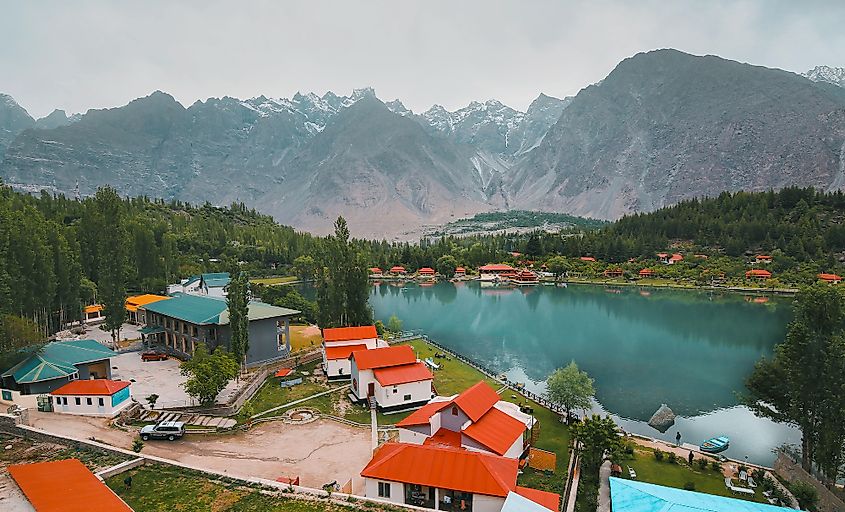
Pakistan, a lower-middle-income developing country, is the world’s 43rd by nominal GDP. With a 2024 population of 254.4 million, it has a diverse economy centered around agriculture, manufacturing, and services. Agriculture employs over a third of the workforce and remains crucial for exports, especially textiles and food products. The industrial sector includes textiles, cement, fertilisers, automobiles, and defense manufacturing. Pakistan's services sector, now over 60% of GDP, is rapidly expanding, with growing telecommunications, banking, and freelancing markets. Historically, Pakistan has shifted between nationalisation and liberalisation, and today emphasizes privatisation and attracting foreign investment. Challenges include high public debt, energy shortages, political instability, and poverty, though recent infrastructure efforts like the China-Pakistan Economic Corridor (CPEC) aim to improve connectivity and growth.
6. Nepal - $6,140 GDP/Capita (PPP)
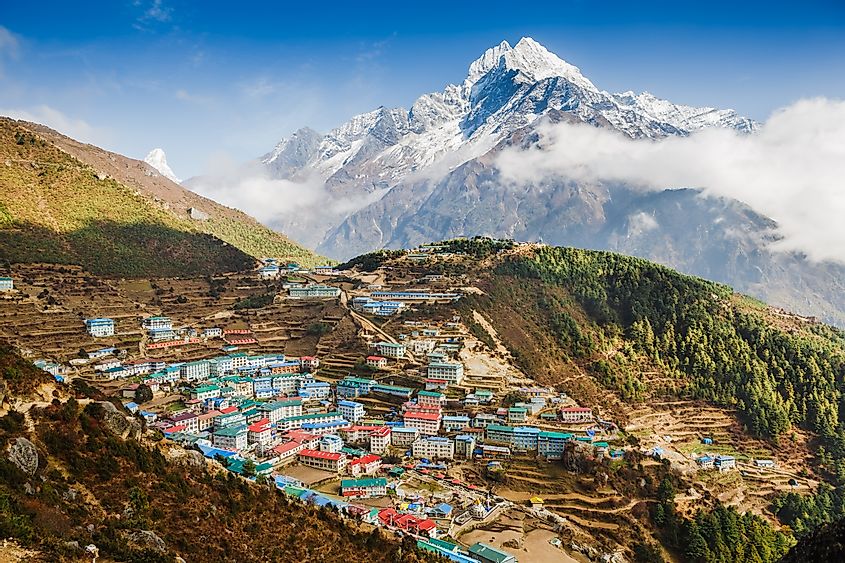
Nepal’s economy is classified as developing and lower-middle-income, primarily driven by agriculture, services, and remittances. Agriculture employs 65% of the population but contributes only about 24.5% to GDP, while services dominate with 61.8%. Nepal’s GDP (2025) stands at $50.83 billion (nominal.) Despite moderate economic growth, Nepal faces challenges like political instability, corruption, and reliance on imports and foreign aid. Hydroelectricity holds vast potential, but development is hindered by financing and geopolitical constraints. Tourism, garments, and carpets lead exports, although trade remains heavily skewed toward India. Poverty has declined, yet 25.3% live on under $3.20/day.
Afghanistan
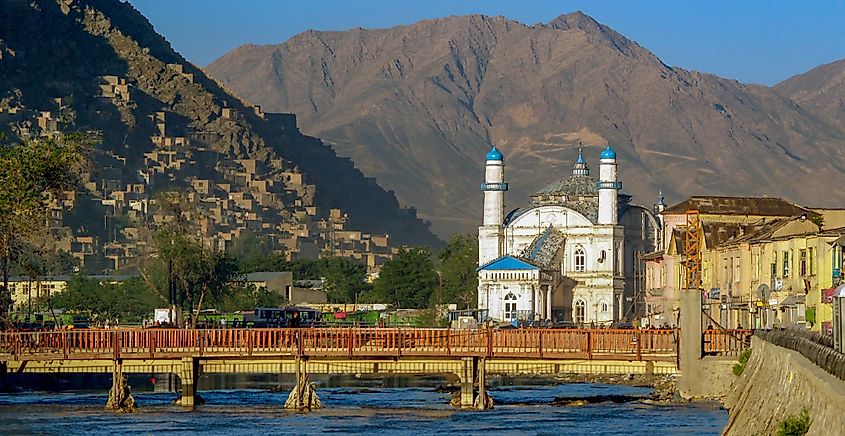
Afghanistan’s economy remains one of South Asia’s most fragile, shaped by decades of conflict, foreign aid dependency, and untapped resource wealth. Agriculture, services, and small-scale industries dominate the economy. Agriculture employs most of the population, though it contributes less than one-third of GDP. Exports include fruits, carpets, and minerals, yet imports far exceed them.
Despite having over $1 trillion in estimated mineral reserves and increasing trade routes, political instability and the 2021 Taliban takeover stalled development. The U.S. froze $9.5 billion in Afghan assets, halting international aid and worsening poverty. Still, domestic revenue collection improved, inflation fell, and trade expanded slightly by 2023. The economy shows signs of stabilization due to strict financial controls, limited imports, and revived agriculture and mining. Long-term prospects hinge on political stability, foreign investment, and regional integration through improved infrastructure and energy development.
Sri Lanka
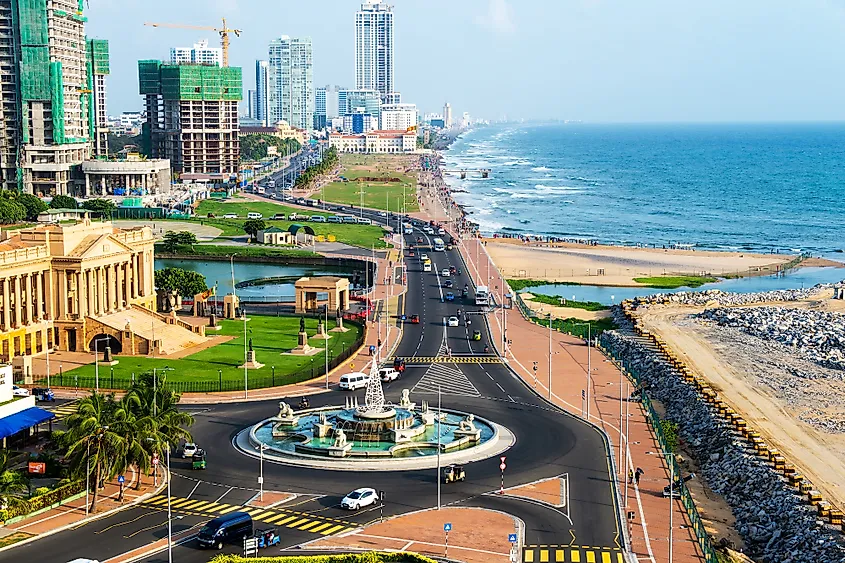
Sri Lanka’s economy has experienced major fluctuations in recent years. Once a strong regional performer with high human development, the country plunged into crisis in 2022 due to high debt, poor fiscal management, and COVID-19’s impact on tourism.
After defaulting on foreign debt, Sri Lanka received a $3 billion IMF bailout. The economy rebounded with 5% growth in 2024, led by services, apparel, and port logistics. Agriculture remains important but limited by climate impacts. Efforts to shift to organic farming backfired, causing a steep drop in crop yields. The country’s key sectors include tourism, textiles, tea, and IT services, with the US, UK, and India as main trade partners.
In conclusion, the richest countries in South Asia illustrate the region’s remarkable economic diversity, driven by tourism, hydropower, technology, and industrial exports. While nations like the Maldives and Bhutan leverage niche strengths to achieve high per capita incomes, larger economies such as India and Bangladesh balance scale with rapid growth. Despite shared challenges—climate risks, inequality, and political instability—South Asia’s wealthiest economies show that strategic planning and innovation can yield sustained prosperity.
Discover More Rich Countries
The Richest Countries In The World
Liechtenstein, Singapore, and Luxembourg stand out as the richest countries for 2025, with GDP/Capita in PPP of $201,112, $156,969, and $152,395, respectively.
The Richest Countries In Europe
Liechtenstein, Luxembourg, and Ireland rank as the three richest countries in Europe for 2025, with a GDP/Capita in PPP of $201,112, $152,395, and $147,878, respectively.
The Richest Countries In Asia
Singapore, Qatar, and Brunei are currently the richest countries in Asia for 2025, with GDP/Capita in PPP of $156,969, $122,283, and $94,472, respectively.
The Richest Countries In North America
The United States, Canada, and Panama are the richest countries in North America for 2025, with GDP/Capita in PPP of $89,599, $65,500, and $43,651, respectively.
The Richest Countries In South America
Guyana, Uruguay, and Chile are the richest countries in South America for 2025, with GDP/Capita in PPP of $94,189, $37,190, and $35,286, respectively.
The Richest Countries In Africa
Seychelles, Mauritius, and Gabon are the richest countries in Africa for 2025, with GDP/Capita in PPP of $42,110, $33,024, and $24,738, respectively.
